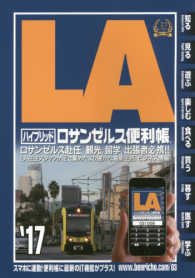- ホーム
- > 洋書
- > ドイツ書
- > Social Sciences, Jurisprudence & Economy
- > Media & Communication
- > book publishing, book trade, librarianship
Full Description
Selon la perspective suivie dans cet ouvrage, le spectateur est actuellement en train d'acquérir de nouvelles capacités de suivi et d'absorption de l'image en mouvement. Depuis une quinzaine d'années, les créateurs de l'iconosphère avancent sur le chemin de la complexification et de la multiplication des moyens narratifs visuels. Cette démarche est préparée non seulement par des expérimentations artistiques historiques mais avant tout par l'accoutumance des populations urbanisées à l'immersion dans l'iconographie dynamique, par la prolifération des sources d'information imagée, par les pratiques interactives tels le zapping télévisuel, la consultation d'Internet, l'imagerie de la téléphonie mobile, ainsi que par la médiatisation iconique de la conduite de véhicules et d'engins. Ces nouvelles manières de consommer l'image et le son dynamisent les nouvelles créations multi-supports et feront bientôt disparaître la salle obscure à projection plate et unique ainsi que les appareils mono-écraniques.
Nous proposons dans cet ouvrage une étude bilingue franco-anglaise quasi-exhaustive du phénomène, ancrée dans l'épistémologie des sciences cognitives, apportant des éclaircissements théoriques conjugués aux analyses des œuvres récentes et anciennes, et étayée par les considérations et les témoignages d'artistes.
According to this study, the spectator is currently acquiring new capacities to follow and to assimilate the moving image. In the last fifteen years, designers in the iconosphere have continued to make progress with the development and expansion of the media of visual narration. This advance is not only the result of past artistic experiments, but is above all rooted in such phenomena as the adaptation of urban populations to dynamic iconography, the proliferation of visual information, the emergence of interactive practices, such as channel surfing, the Internet search, mobile phone interfaces, as well as the visual interfaces for operating vehicles and other machines. These new ways of consuming images and sounds have fueled an expansion of new multi-screen designs that will gradually make the dark theater projection and the single-screen device obsolete.
This bilingual French-English study offers a semi-comprehensive investigation of these phenomena, anchored in the epistemology of cognitive science, providing theoretical explanations combined with analyses of recent and historical works and accompanied by the reflections and testimonies of artists.
Contents
Contenu/Contents: Marcin Sobieszczanski : Une théorie génétique de la monstration vidéofilmique distribuée spatio-temporellement - Michaël La Chance : Le multi-écran : partition pour fenêtres mobiles - Marc Boucher : Vision périphérique et disposition des écrans - Christine Palmiéri : Gouffre et vertige ; l'installation vidéo multiscreen « Néant compulsif II » - Marie Christine Questerbert : Du split-screen au multi-screen, l'héritage - Owen Kevin Appadoo : L'état des lieux du cinéma holographique - Caroline Bernard : Migrateurs/Echanges filmiques et tissages cinématographique - Frédérique Calacagno-Tristant: Screen Blog - Jean Delsaux : Dispositifs d'images - Pascale Weber : Pour une densification et un épaississement de l'image... - Céline Masoni Lacroix : Eijah-Liisa Ahtila, le fragment et la morsure - Anne-Sarah Le Meur : Image, dispositif, interaction. Jeux de perception dans Outre-ronde - Marcin Sobieszczanski: A genetic theory of the videofilmic monstration distributed in the space and in the time - Michaël La Chance: Split-screen and synaesthesia in Timecode. A quadraesthetic device - Marie Christine Questerbert: From split-screen to multi-screen: the heritage - Owen Kevin Appadoo: State of Development of holographic cinema - Caroline Bernard: Migratory/Filmic exchanges and cinematographic weavings - David Mather: Alien World: The Multi-Screen Riddle of Katzenstein's Home - Katia Maciel: Transcinema: two installations - Józef Bury: Cyberspace and the Local Illusion - Working notes, 1992-2005 - Jean-Yves Béziau/Catherine Chantilly: Salomé Multiscreen.






